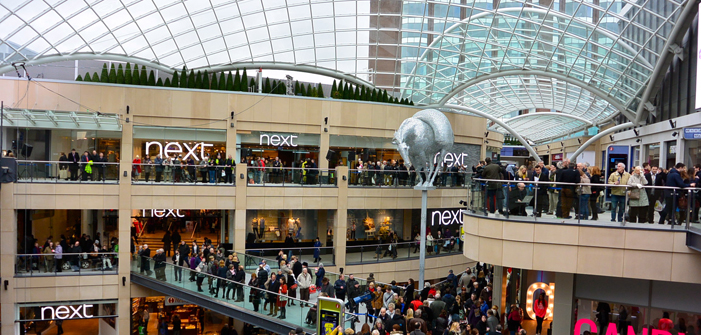GeoPhy Reveals Carbon Footprints Of UK’s Largest 21 Retail Centres Equal The Footprint Of A City The Size Of Manchester
GeoPhy, the leading commercial property intelligence company, today publishes research which shows that the largest 21 shopping centres in the UK have a combined carbon footprint equivalent to all the homes in Manchester.
The UK’s 21 largest shopping centres, with more than 4,000 stores between them, are responsible for a carbon footprint of approximately 7,500,000 tonnes of CO2 per year. This is, equivalent to about 430,000 homes, or all the residential accommodation in the city of Manchester. Data also reveals that the top 15 shopping centres alone account for 5,500,000 tonnes of CO2, the equivalent of 313,000 homes or a city the size of Nottingham.
According to the GeoPhy research, the shopping centres with the largest total CO2 footprint are: The Trafford Centre and Arndale Centre in Greater Manchester, St. David’s in Cardiff, Centre MK in Milton Keynes and Meadowhall Mall in Sheffield.
The main difference here is not so much in the buildings themselves, but in the travel to and from the centre that – on average – accounts for over 90% of the total carbon footprint.
The research takes into account both the “direct carbon footprint”, which includes energy use for lights, heating and cooling, and also factors in the travel emissions to and from the centre. With most shopping centres, approximately 80%-90% of people drive there which accounts for a higher carbon footprint than at centres that can easily be accessed by public transport.
GeoPhy CEO and Founder Teun van den Dries commented:
“Our figures show the sort of levels of CO2 emissions associated with some of the most popular shopping centres, where many people are currently buying their Christmas presents. In addition to the energy use from bright lights and store heaters, people who drive to shop will produce a lot more CO2 than those who make use of public transport.
While we can all exercise personal responsibility for carbon reduction, it is also the government’s responsibility to provide appropriate public transport to keep carbon emissions down. Alongside regulation this is a tangible measure it can take to fulfil environmental obligations.
Technology has an important role to play in enabling businesses and investors across a variety of sectors, including retail, to understand their CO2 emissions. The recent climate conference in Paris has put CO2 emissions at the forefront of people’s minds, and for the financial services industry, particularly asset managers whose property portfolios have large carbon footprints. Hitherto it has been hard for those managing buildings and property portfolios to understand their CO2 emissions. Today, smart tools enable asset managers to read and analyse large amounts of data, allowing them to benchmark their CO2 emissions and thus give themselves a baseline from which to reduce their carbon footprint.”
GeoPhy’s research results are based on information shopping centres are required to publish every year to extract data on energy use, including data points from heating and lighting to sewage and waste disposal. GeopPhy uses sophisticated modelling software to define a building’s carbon footprint, combining and cross-referencing with other data such as the availability of public transport.
GeoPhy Reveals Carbon Footprints Of UK’s Largest 21 Retail Centres Equal The Footprint Of A City The Size Of Manchester


